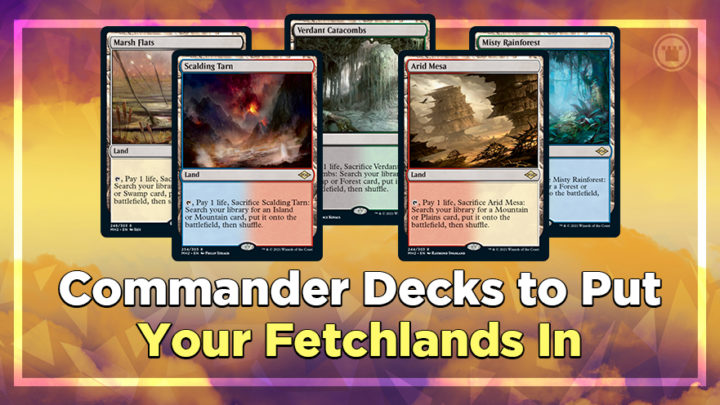If there’s one type of card that always needs a reprint, it’s fetchlands. In demand for Modern, Legacy, and even Commander, these prize game pieces are much sought after from players of all kinds. Thanks to a reprint in Modern Horizons 2, the enemy fetchlands will be readily available in a booster product for the first time since 2017’s Modern Masters set.
But what can you do with them in Commander? Where are they best suited for play? What should you build if you own a couple, or if you open a few?
Fetchlands in Commander

If there’s one format where you don’t technically need to play fetchlands, it’s Commander. So what makes them so attractive in the format? Well, despite the fact that you can get away with not including them at a more casual table — or in a deck with only one or two colors — there’s no denying their efficacy once you start to edge more competitive, or fancy playing a four- or even five-color build.
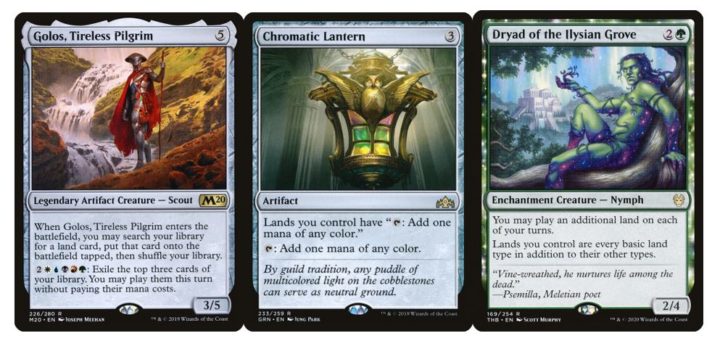
Again, I’m not saying it’s impossible to brew without them. Commanders like Golos actively encourage a more casual approach and are more forgiving, given Golos himself can grab whatever fixing you need. There are also format staples like Chromatic Lantern, which fix all of your color issues.
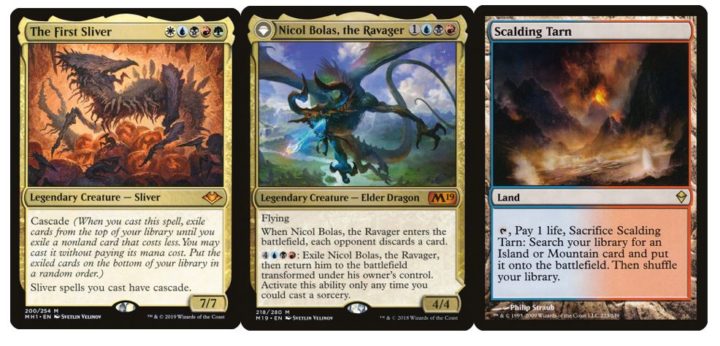
Where they do come in handy, however, is when your mana is very important. In a deck like The First Sliver, you’ll want to hit your commander on turn five, if at all possible. You’re also running an assortment of Slivers with wildly different color requirements. In a Grixis deck, you don’t have access to the best green fixing, so fetchlands can be crucial in helping you cast spells on curve, too.
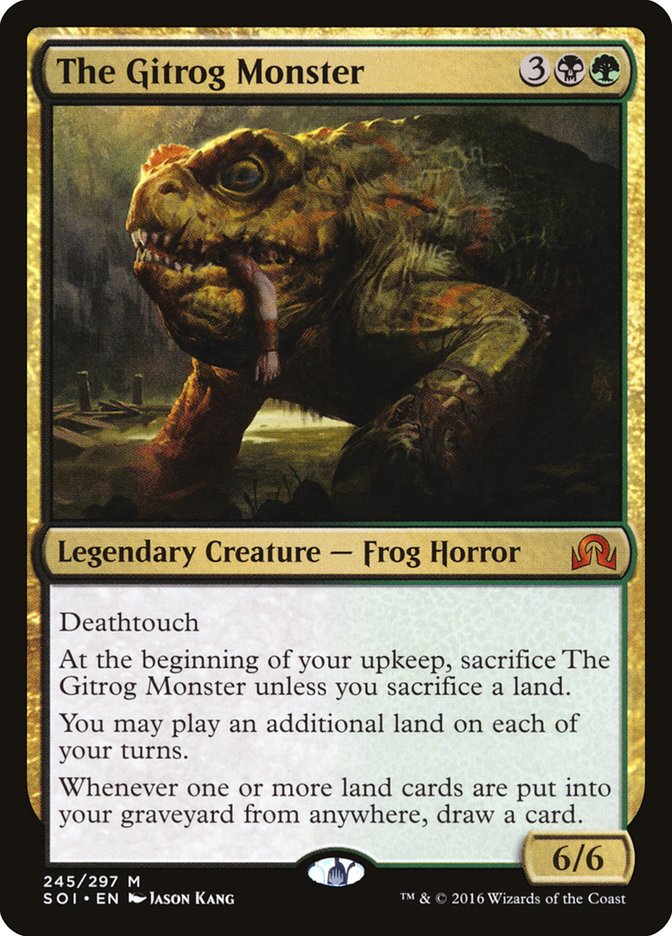
And then there’s lands decks, like The Gitrog Monster. Landfall or lands-matter builds care about making extra land drops and reusing lands in the graveyard. Chances are, if you’ve ever built one of these decks without fetchlands, you’ll have been less than impressed. The deck might not have functioned smoothly, and you may not have been able to make use of the graveyard quite so readily.
Fetchlands aren’t always necessary at every power level, but when it comes to synergy? There’s nothing quite like them. Fetchlands change everything when it comes to the types of deck you can build.
Color Fixing
The fetchlands in Modern Horizons 2 are the enemy fetches, which means that enemy-color decks have the most to gain from these reprints. So, if you’re in Boros, Golgari, Izzet, Orzhov or Simic, you’ll have access to more color fixing. While the green-based decks can often overcome the lower amount of “typed” lands in enemy colors (such as Prairie Stream), the non-green colors struggle a little more.

Having a way to get your Sacred Foundry, or a Plains or Mountain — or, if you’re lucky, a Plateau — can really help, especially when these have been the only options up until recently. With the addition of snow dual lands, enemy colors have some much-needed additional fixing options.

If you’ve got access to the right Triome for your three-color deck, you’re going to be much better off for having a fetchland, too. With just snow duals, a Triome, and shocklands, you’re well on the way to getting perfect mana every game. This can really help once you start playing at high-power or cEDH tables.

Keep in mind that fetchlands can also grab the likes of Mystic Sanctuary, Mistveil Plains, or Dryad Arbor. These are niche but useful lands for the most part, with Mystic Sanctuary being the most powerful. Being able to play a fetchland to trigger a card draw trigger from Tatyova and responding by fetching Mystic Sanctuary into play is always a rewarding sequence.
More Than Just Fixing
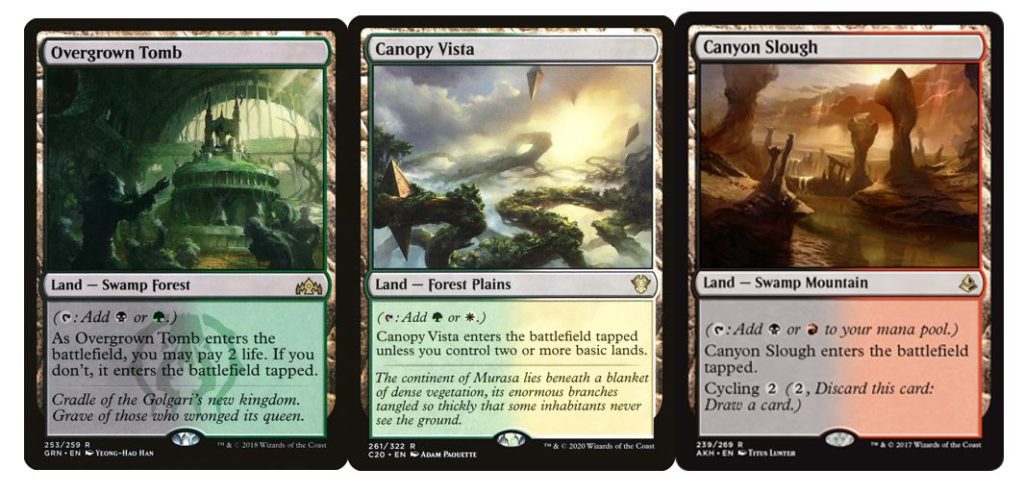
Fetchlands do a lot more than just fix your colors. Sequenced correctly, they can be used to grab a tapped land like a Canyon Slough if you don’t need mana that turn. This means that you’ve removed a tapped land from your deck, meaning you’re more likely to draw into an untapped source.
While deck thinning (the act of improving your draws by removing land from the deck) matters less in a 100-card format, it’s still a margin you can bank on when playing fetchlands — especially when you have them in multiples, or ways to get them back from your graveyard.
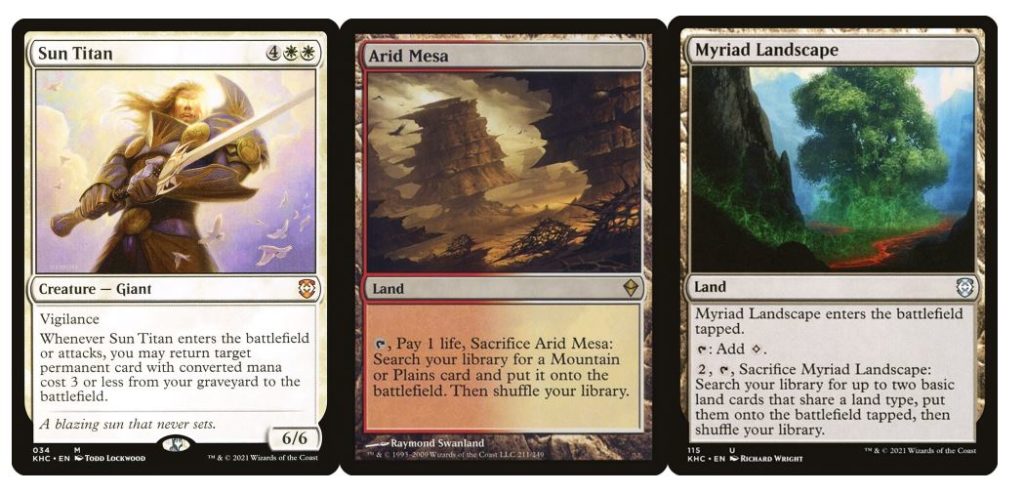
Format classic Sun Titan can ramp you every turn if you have a fetchland to bring back, and this can even be accomplished with slower fetches like Evolving Wilds or Myriad Landscape.
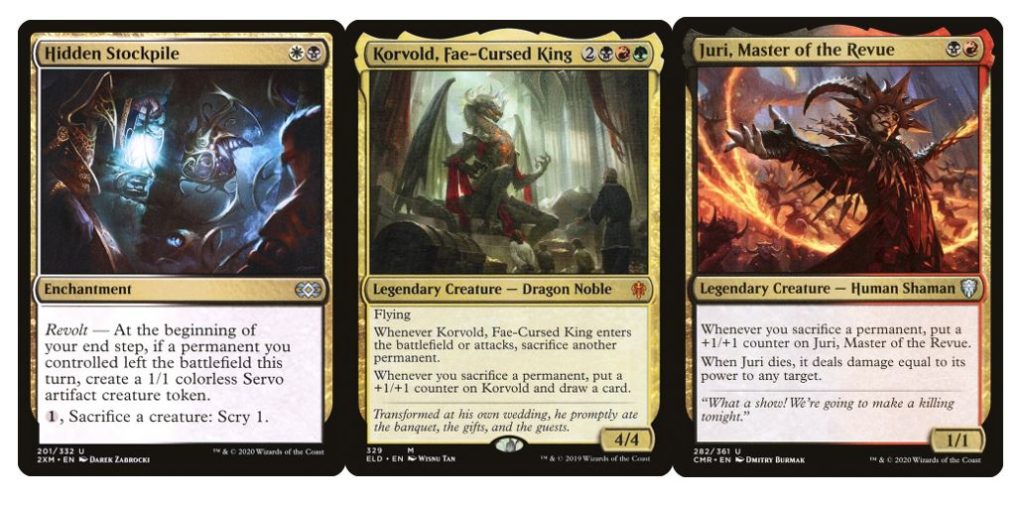
They’ll also trigger certain effects you might be interested in. If you’re playing an Aristocrats deck where sacrificing your permanents is of value, consider how fetchlands might help you up your game. For example, they can help turn on Hidden Stockpile to give you even more tokens. In decks like Korvold or Juri, Master of the Revue, they’ll also contribute to your main strategy.
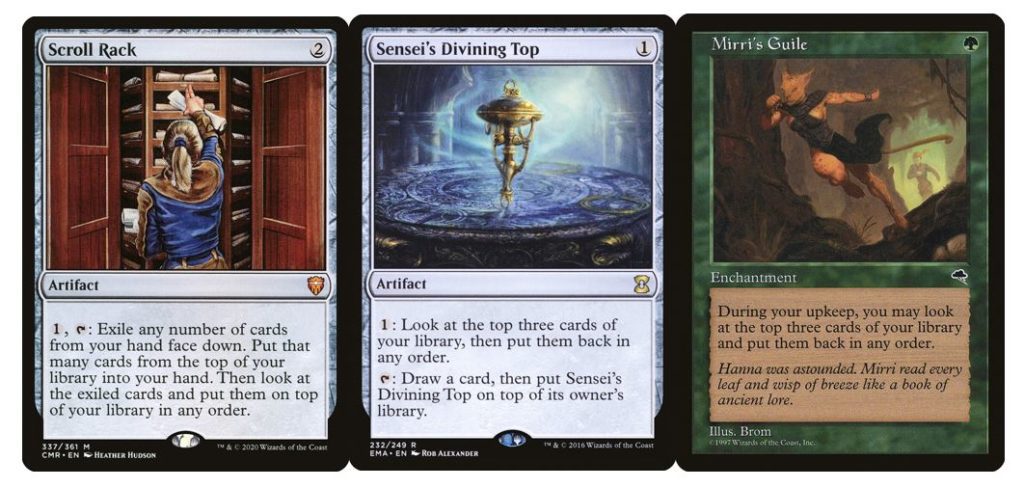
Fetchlands are also a really good way to get a shuffle when you don’t like what’s on top of your library. If you’re a fan of Scroll Rack or Sensei’s Divining Top, you can count on a fetchland to mix things up so you can get a look at some fresh cards. This is one of the most underappreciated uses for these lands, and one that you can achieve with budget fetches like Fabled Passage, too.


Finally, let’s not skip over the many ways to take advantage of fetchlands in a dedicated lands-matter shell. Getting extra land drops each turn is an obvious goal, but you can take this to the next level by combining these cards with others that let you get lands from the graveyard. That way, you’ll never run out of land drops — even when you have no lands in hand.

Playing lands from the graveyard is one thing, sure, but being able to grab them in other ways is just as vital when building a deck around this strategy. Life from the Loam is a great engine card, and don’t pass up Crop Rotation as a way to find a fetchland to kick things off — it doesn’t always have to grab utility lands.
Commanders That Love Fetchlands
Besides just improving your existing decks, fetchlands also open you up to a swathe of commanders that are good but not great without access to these lands.
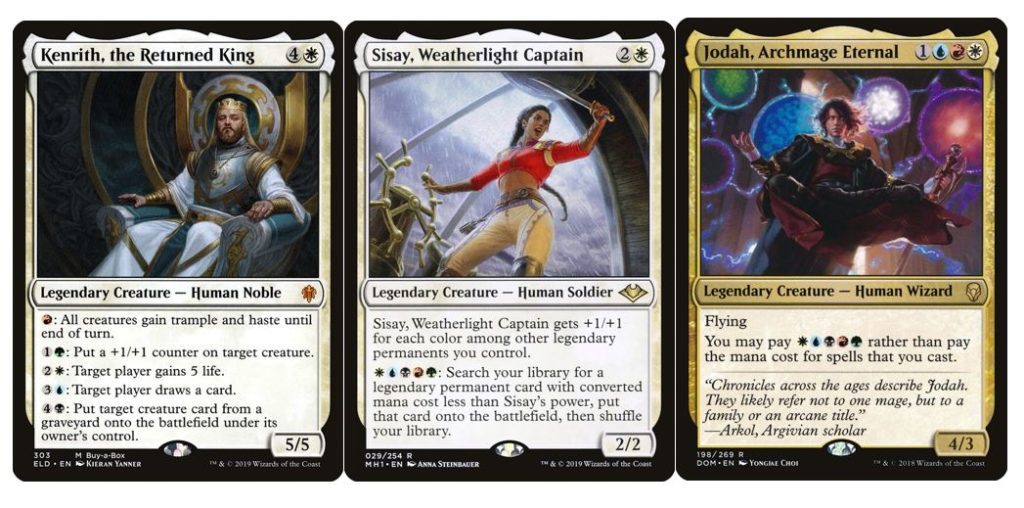
Five-color decks need all the help they can get when it comes to getting online. Though I often advocate for sticking to a core group of three colors (usually including green) to base the deck on, fetchlands make it a lot easier to play this type of deck.
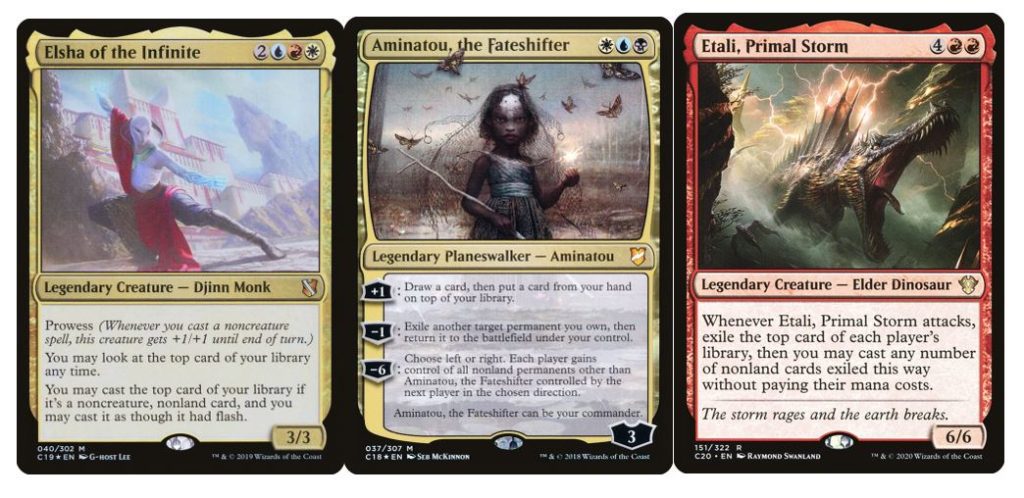
Commanders that care about the top of the deck are also much better with fetches. As someone who has built Elsha in the past, I have to say it ran a lot better with more ways to shuffle the deck when you didn’t like what was on top. Other commanders care about this sort of thing, too. Aminatou is one of the more popular options in Esper, and is not shy about shuffling, if need be. Even monocolored decks like Etali, Primal Storm can benefit from the shuffle effects if you know what’s on top.
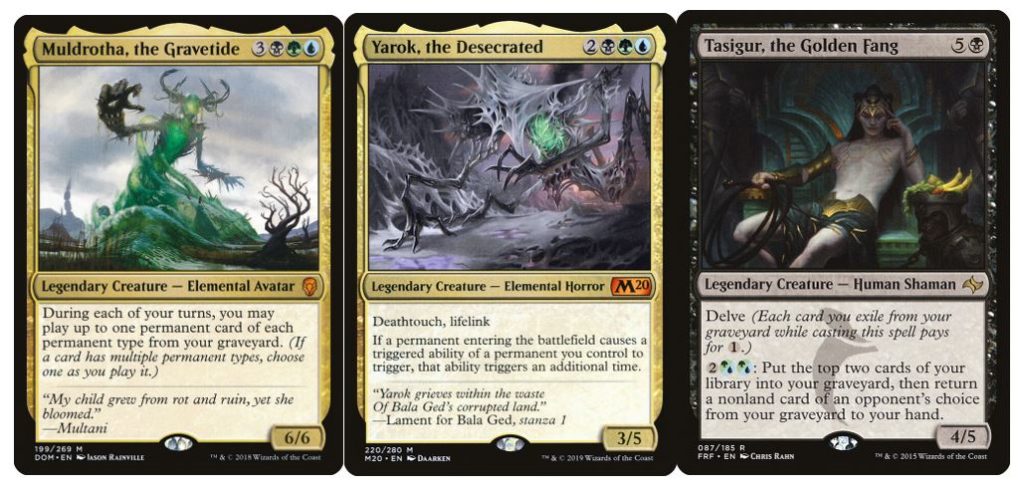
You either avoid Sultai, or you play long enough to see yourself become Sultai. One of the better color combinations for using the graveyard and ETB triggers, Sultai decks are one of the more attractive options when it comes to using fetchlands. Muldrotha, the Gravetide can play a land from the graveyard each turn, while Yarok doubles up landfall triggers. Tasigur, meanwhile, wants a full graveyard in order to take advantage of dredge.

Here’s the biggie: lands-matter decks. If you’ve never had the chance to play with fetches before now, you might have missed the opportunity to play with lands-matter commanders. Aside from the aforementioned Gitrog Monster, there are some really popular commanders on this list. The key to building any of these commanders is to have a strong game plan and make sure you’re building toward it. Though cards like Constant Mists and Spore Frog are devilishly tempting, make sure you’re not dragging the game out longer than necessary. Whether you’re playing these commanders, any flavor of Omnath, or even mono-blue Cosima, God of the Voyage, they all benefit from fetchlands.
***
Even having played the game for years now, there’s a certain something in the air to get excited about when fetchlands see a reprint. I can still remember the trash pile Gitrog deck I built back when my collection was small, and I had no way to get my hands on the right lands for the deck. Fetchlands are by no means necessary to play Commander, but they’ll help you build synergy into certain archetypes, refine your build for high power tables, and unlock the potential of a lands-matter deck. Let me know on Twitter if you’re building something new from Modern Horizons 2!

Kristen is Card Kingdom’s Head Writer, and member of the Commander Advisory Group. Formerly a competitive Pokémon TCG grinder, she has been playing Magic since Shadows Over Innistrad, which in her opinion, was a great set to start with. When she’s not taking names with Equipment and Aggro strategies in Commander, she loves to play any form of Limited.

